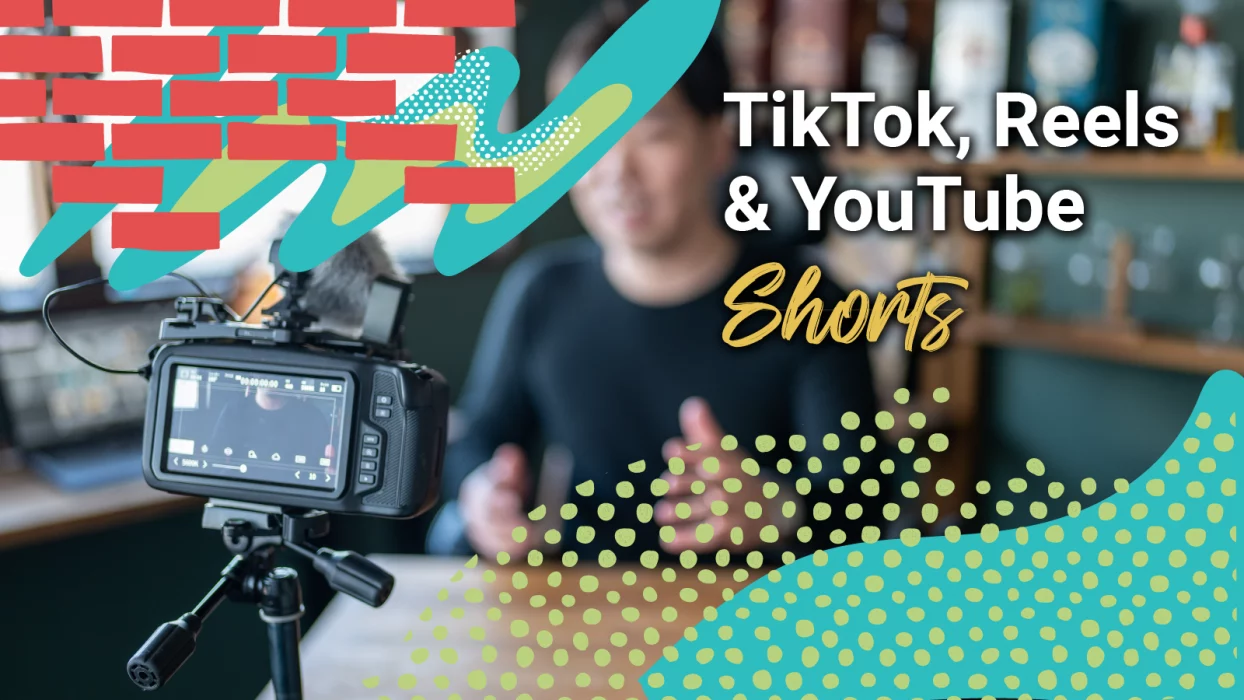
Courtesy of 8THIRTYFOUR Integrated Communications
If you don’t remember Vine, you might be under the impression that TikTok was the first short-form video platform to hit the scene. For this blog, we’ll pretend that’s the case (it’s not). In response to the success of TikTok; Instagram Reels and YouTube shorts were created. So. Much. Video. Content.
If you’re wondering what the differences are between the three and which makes the most sense for you, we created this handy chart that you can download, frame, and hang in your office—to remember us always.
We’re about to get real nerdy, so hold onto your computer and keep reading.
TikTok Pros & Cons
Obviously, one pro of TikTok is that it’s the go-to place right now for short-form video content and it continues to grow. In 2022 alone, TikTok introduced tons of new features to improve user experience. It’s incredibly popular with the younger demographic, making it one of the best places to advertise to Gen Z and Millennials. As a bonus, TikTok ads flawlessly blend into the scroll without being overtly obvious.
They aren’t a ton of cons to TikTok. They’re setting the standard for short-form video platforms and with that comes a certain amount of authority. TikTok does require very consistent nurturing. This can be tough– especially if you’re a small business that doesn’t have time to crank out content or a marketing agency that can’t always be on-site to gather content. Another con to keep in mind is that TikTok is banned in certain countries, like India.
Instagram Reels Pros & Cons
Ah, Instagram. Instagram took the freaking cake for social media when it launched in 2010. Has it really been that long? Where does the time go? Instagram has done a lot right, Reels are pretty user-friendly and have a clean interface. There is also an exclusive section to watch Instagram Reels within the Instagram app. The shopping feature is one of the primary advantages since you can buy directly from the app without leaving the platform.
However, Reels are still new(ish) to Instagram and could use some refinement. One of the most annoying things about Reels is that you cannot pause a reel, and you cannot scrub forward or backward. You can mute it though…like ok then. Unlike TikTok, there isn’t a desktop version of Instagram Reels, which means no workplace distractions when you should be giving that Zoom meeting your full attention.
YouTube Shorts Pros & Cons
We find it rather ironic the platform that set the standard for online video content was the absolute last to create a short-form version. YouTube Shorts lagged behind launching in March 2021 vs. Instagram Reels in August 2020. It’s not without its advantages, though. YouTube shorts are a great way to communicate to your already established following without fussing around with a longer, more polished video. YouTube is a platform used by people young, old, and all over the world– this means your shorts have a chance of being viewed by someone who may not be on Instagram or TikTok.
At this time, and maybe forever and always, YouTube Shorts doesn’t have the popularity of TikTok and Reels. It is getting there…slowly. You also can’t monetize YouTube shorts which is a bummer for some content creators.
Which One’s the Best?
The jury’s out on that one. Deciding which platform is best for you depends on your end-goal and where your account currently stands. Right now, TikTok is king and Instagram Reels are gaining more traction as Instagram changes up its platform to accommodate the digestible, short-form video craze.
The perfect answer to this question doesn’t exist, but if we had to break it down simply and if you scrolled all the way to the bottom of this blog because you didn’t want to read everything else up there, here’s the skinny.
- Tik Tok is the most popular short-form video app, and newer accounts can see a decent amount of traction on their videos in a short amount of time.
- Instagram Reels are a great addition to the platform, and Instagram is prioritizing them. Don’t get left behind.
- YouTube Shorts benefit established YouTube content creators and have less of a niche audience.